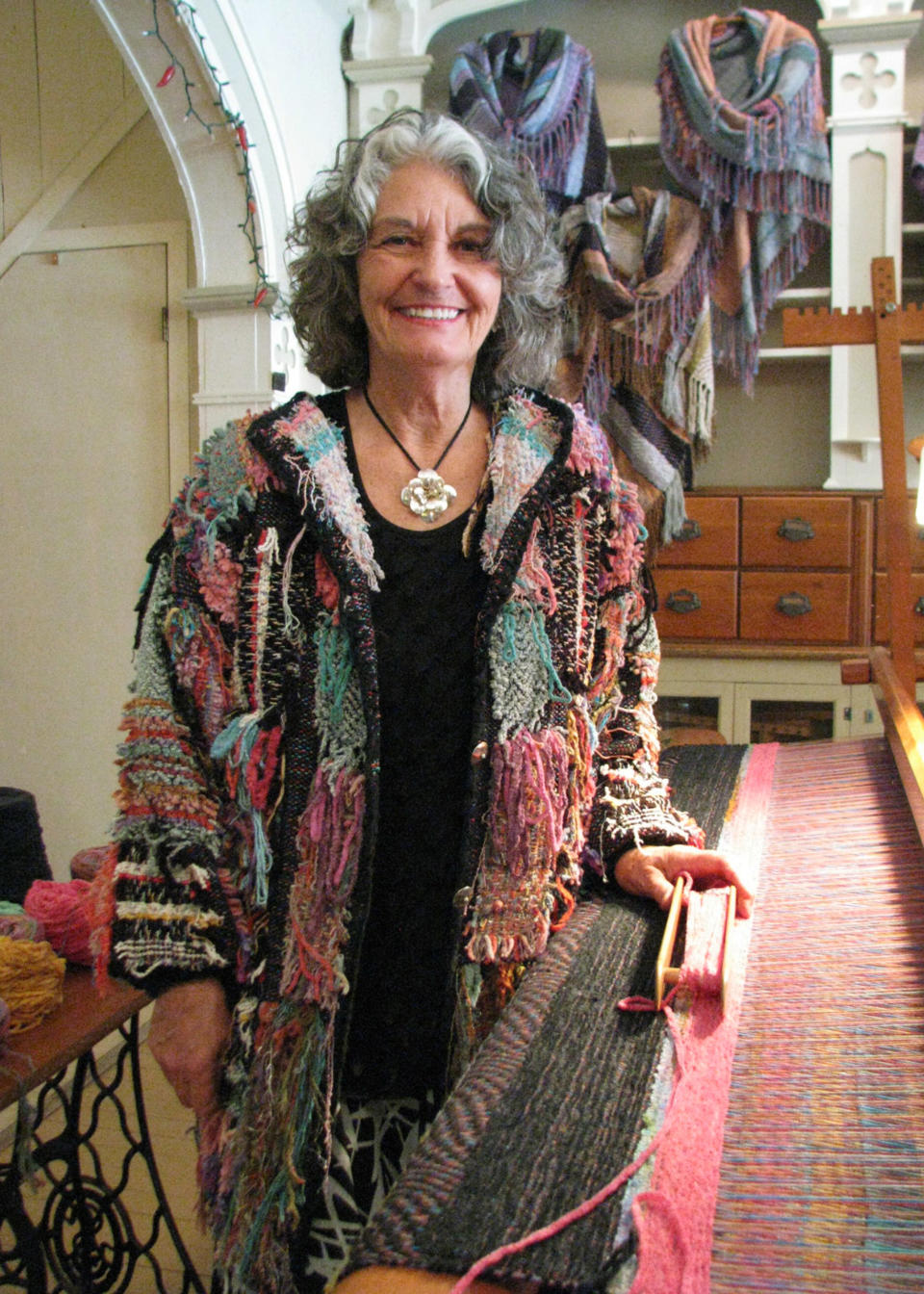Artists community grows in Mark Twain's hometown
HANNIBAL, Mo. (AP) — Nancy Lee Kaufman was prominent in the arts scene in chic Santa Fe, N.M., and later made her woven art along the ocean near San Diego. So how did she end up living in a previously condemned house near the railroad tracks in small-town Missouri? The short answer: By choice.
Other artists began telling Kaufman about the burgeoning arts community in Hannibal, a Mississippi River town of 18,000 known mostly for favorite son Mark Twain. When she visited in 2005 she happened upon a once-gorgeous old downtown home overlooking the Mississippi River, an early 19th century building in such disrepair that demolition was weeks away.
The inside was a mess of crumbling boards and piled up debris. But, oh, that view from the window.
"I looked out and there were icebergs floating down the river, the sun shining off of them, eagles flying overhead," Kaufman, 64, said. "That was it."
Twain still is the main attraction for the half-million tourists who visit Hannibal each year, but now they get a bonus: A growing number of artists, many of national and international repute.
"The downtown storefronts are filling up with artists," said Gail Bryant, director of the Hannibal Convention and Visitors Bureau. "That's certainly part of the draw."
During the past decade dozens of artists ranging from painters to potters, weavers to photographers have come to Hannibal, attracted to the breathtaking river scenery, the charming — if often dilapidated — old homes, a welcoming community and a ready-made base of visitors. It also helps that Hannibal, smack-dab in the middle of the nation, is within a day's drive of countless art shows and fairs crucial for making ends meet.
It hasn't always been this way. When Steve Ayers opened his pottery shop in 1985 he was about the only artist in town. Admittedly "lonesome," he began reaching out to others.
Then, about 10 years ago, Hannibal and two other northeast Missouri towns — Louisiana and Clarksville — worked together to form what they called a 50-mile corridor of arts, even getting banks to commit to low-interest loans to help attract artists and craftsmen.
The project is no longer active, but the influx began. Some say the artists are creating a new vibe in the 177-year-old community.
"It's amazing how alive this little street really is," Ayers said as he glanced out along Main Street, where a young bearded man strummed a guitar on a recent warm day. At another corner, people sat in sidewalk chairs solving the world's problems.
"There's very much a growing bohemian feel," Ayers said.
Joachim Knill, originally from Switzerland, was living out of his van when he heard about Hannibal and moved to town about a decade ago. Knill sculpts, paints and makes three-dimensional art using Polaroid photographs and has won first place or best of show awards at dozens of shows, including the Detroit Festival of the Arts, Uptown Art Fair in Minneapolis, Utah Art Festival in Salt Lake City, and the Plaza Art Fair in Kansas City, Mo. He purchased a large downtown house and even bought the old city jail, with plans to make it into a studio.
Painter Melissa Dominiak and her then-husband, photographer Michael Cole, were living in Seattle when they decided to move to Hannibal six years ago to be closer to art shows and because of its affordability. She finds inspiration in the century-old brick church they bought and rehabbed for a fraction of the cost of a similar fixer-upper in most parts of the country.
"Actually, less than a fraction," Dominiak said.
Kaufman grew up in St. Louis. She developed a passion for weaving decades ago after buying an old loom at an auction. She eventually relocated to Santa Fe and became a prominent artist there, rubbing shoulders with the likes of Georgia O'Keefe. Her family relocated to southern California, and her reputation grew.
She began hearing from other artists about Hannibal but was skeptical. Her only previous visit was to the Twain sites as a 6-year-old. Still, she decided to give it a look.
"The thought of a quaint little shop in a little town intrigued me," Kaufman said.
She bought a historic Main Street building for her shop, then heard about the house along the river, one of the oldest in town, and showing its age. When she went to City Hall to finish paperwork on the purchase she was told the city had been ready to take bids for demolition.
Ayers said artists have invested $3.5 million in real estate purchases during the past decade, including many purchases that saved historic buildings, based on real estate records he has examined.
They're also giving Hannibal a strong reputation in the arts community, earning national recognition for their work. The Cherry Creek Arts Festival in Denver July 6-8, considered one of the best in the U.S., received applications from 2,100 artists. Only 236 exhibitors were chosen. Seven of them were from Hannibal, including Knill, Dominiak and Cole.
Many of the artists also will be among the 60 or so who display their work Saturday and Sunday in the first-ever Hannibal Downtown Art Fair, on Main Street.



